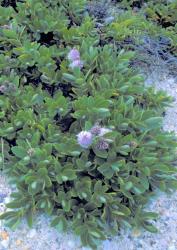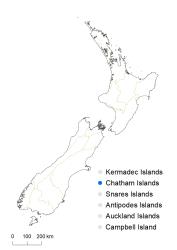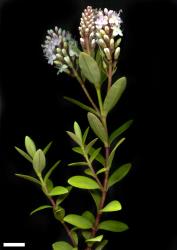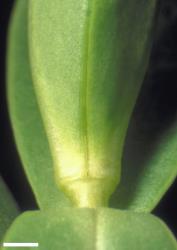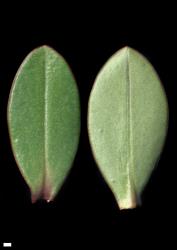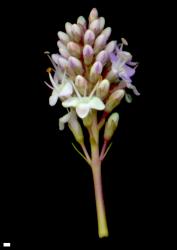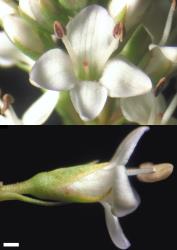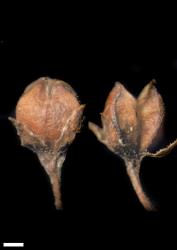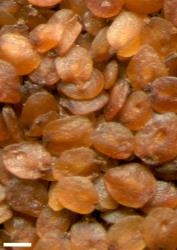- ≡ Hebe chathamica (Buchanan) Cockayne & Allan, Trans. New Zealand Inst. 57: 22 (1926)
- = Veronica coxiana Kirk, Trans. New Zealand Inst. 28: 529 (1896)
- ≡ Veronica chathamica var. coxiana (Kirk) Cheeseman, Man. New Zealand Fl., ed. 2, 794 (1925)
- ≡ Hebe coxiana (Kirk) Cockayne, Trans. New Zealand Inst. 60: 470 (1929)
Spreading low or mat-forming shrub to 0.25 m tall. Stems prostrate to decumbent, or pendent on cliffs, eglandular-pubescent; hairs uniform or rarely bifarious. Leaf bud indistinct; leaves separating while small, opposite-decussate to sub-distichous, erecto-patent to recurved; sinus absent or very rarely minute and rounded; lamina coriaceous, elliptic to obovate or oblanceolate, 8–33 mm long, 3–17 mm wide, dull green to dark green above, green beneath; midrib evident; surfaces with eglandular hairs on midrib, or eglandular-hairy, or rarely glabrous; margin pubescent or glabrous, entire; apex obtuse to sub-acute; base cuneate; petiole absent. Inflorescence a lateral raceme, 13–41 mm long; flowers crowded, 20–40, all bisexual; bracts alternate or the lowest pair opposite, lanceolate or linear-lanceolate, ≥ pedicels; pedicels erecto-patent, 1–2.6 mm long, eglandular-hairy all around. Calyx lobes 4, acute to acuminate, rarely sub-acute, 1.7–3.5 mm long, sub-equal, eglandular-ciliate or with a few glandular hairs as well, often also hairy on outer surface. Corolla 6–8 mm diameter; tube white, 2.5–4.0 mm long, > calyx, eglandular-hairy inside and at bases of lobes; lobes 4, white or tinged pale purple, erecto-patent to spreading, sub-equal, elliptic to ovate, 2.0–3.5 mm long, obtuse to rounded; nectar guides absent. Stamen filaments white, 4.0–4.5 mm long; anthers pale brown to pale purple. Style glabrous or eglandular-hairy, 5–6 mm long. Capsules latiseptate, sub-acute to obtuse, glabrous or eglandular-hairy, 3.5–5.0 mm long, 2.5–3.5 mm at widest point. Seeds ellipsoid to sub-discoid, flattened, smooth, brown, 1.2–1.6 mm long.
Veronica chathamica plants have smaller leaves than plants of the other two woody hebes on the Chatham Is., and their leaves are relatively broader in shape. V. dieffenbachii plants might be confused with them, but tend to have larger leaves, longer inflorescences with more flowers, and often a taller growth form.
Chatham Is. (The Sisters [Rangitatahi], Chatham I., Pitt I. [Rangiauria], South East I. [Rangatira]).
Coastal rocks and cliffs, low vegetation at beach and lagoon margins. Recorded elevations range from 0 to 100 m.
Where V. chathamica and V. dieffenbachii occur together they may be hard to distinguish and it is possible that hybridisation is occurring.
Flowers: December–March; fruits: January–March, persisting all year.
2n = 40 (see Bayly & Kellow 2006, as Hebe chathamica).
Veronica chathamica is classified in V. subg. Pseudoveronica sect. Hebe and the informal group “Occlusae” (Albach & Meudt 2010; Bayly & Kellow 2006).
V. chathamica is variable in a number of features: leaf shape and size, stem and leaf indumentum, and the shape and hairiness of the calyx. Some plants of V. dieffenbachii and V. chathamica have been observed with blue or purple pollen, but more often it is whitish.



